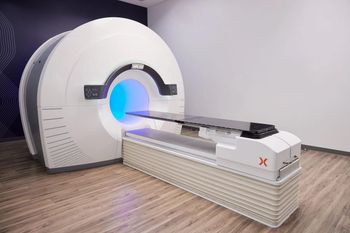
What a New MRI Study Reveals About Enhancing Parenchyma in Women with Extremely Dense Breasts
Emerging research suggests that a high volume of enhancing parenchyma on dynamic contrast-enhanced MRI more than doubles the breast cancer risk for women with extremely dense breasts.
In a study of over 4,500 women with extremely dense breasts, dynamic contrast-enhanced magnetic resonance imaging (DCE-MRI) findings revealed that women with a high volume of enhancing parenchyma have a significantly higher risk of breast cancer in comparison to those with a low volume of enhancing parenchyma.
For the study, recently published in
In their examination of 15 quantitative fibroglandular tissue features, the study authors found that the volume of enhancing parenchyma accounted for 42 percent of the variance and association with breast cancer occurrence. After stratification of these patients into subgroups of low, intermediate, and high enhancing parenchyma volume, the researchers did a multivariable analysis with adjustments for age, BMI, and background parenchymal enhancement (BPE).
The study authors found that women with high enhancing parenchyma volume had a 2.09 hazard ratio (HR) for breast cancer and those with an intermediate enhancing parenchyma volume had a 2.15 HR in comparison to women with low intermediate enhancing parenchyma volume.
“Automated identification of quantitative breast parenchyma enhancement features on dynamic contrast-enhanced (DCE) MRI scans could provide added value for assessing breast cancer risk in women with extremely dense breasts,” wrote study co-author Kenneth G.A. Gilhuijs, Ph.D., an associate professor with the Image Sciences Institute at the University Medical Center Utrecht in the Netherlands, and colleagues.
(Editor’s note: For related content, see “
In an
“This demonstrates the value of breast parenchymal measurements and shows that important information can be extracted from the images beyond subjective radiologist assessment of BPE,” noted Dr. Grimm, an associate professor in the Division of Breast Imaging in the Department of Radiology at the Duke University Medical Center.
In regard to study limitations, the study authors noted the findings are restricted to short-term associations between parenchymal features and breast cancer risk due to a six-year follow-up period. They also conceded a lack of information as to the race and ethnicity of the study cohort, which may inhibit general extrapolation of the study findings.
Newsletter
Stay at the forefront of radiology with the Diagnostic Imaging newsletter, delivering the latest news, clinical insights, and imaging advancements for today’s radiologists.




























